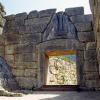Време - пространство
-
Подкрепете ни
За любознателните умове и свободния обмен на идеи.
Запази forumnauka.bg – имаме нужда от вашата подкрепа да съществуваме и да се развиваме.
Научи повече:
https://www.paypal.com/donate/forumnauka.bg
-
Теми
-
Руско-украинската война 2022-2024 година. 1 2 3 4 131
От Р. Теодосиев, in Руско-украинската война 2022 година.
- 3263 мнения
- 156553 views
-
- 4701 мнения
- 203680 views
-
- 409 мнения
- 52164 views
-
- 2662 мнения
- 154666 views
-
- 126 мнения
- 7869 views
-
-
Последно разглеждащи 0 Потребители
- No registered users viewing this page.




Recommended Posts
Напиши мнение
Може да публикувате сега и да се регистрирате по-късно. Ако вече имате акаунт, влезте от ТУК , за да публикувате.